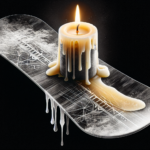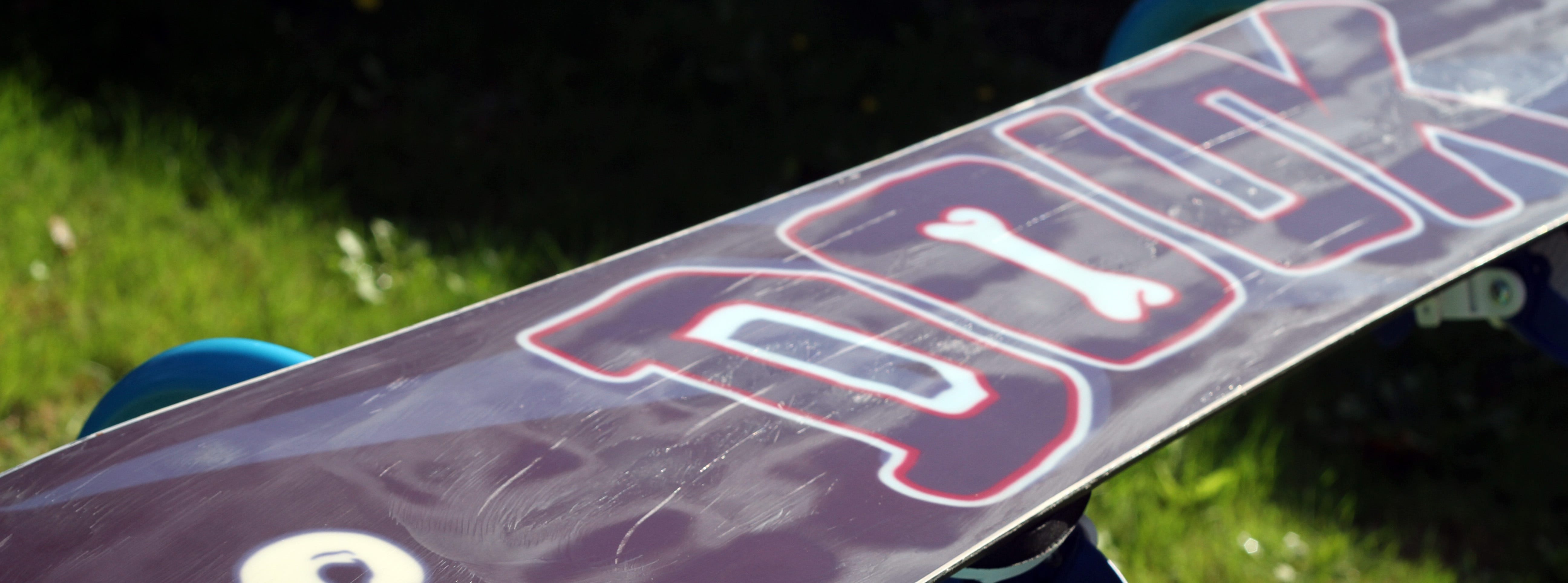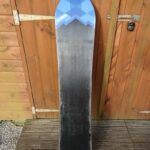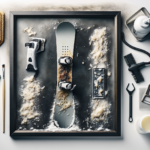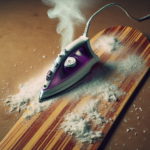Ever wondered about the seemingly tedious process of waxing your snowboard? You’re certainly not alone! In the quest for that seamless glide down the slopes, you’ve likely pondered if waxing is really necessary. Perhaps a snowboard is just as effective without it. Is waxing an age-old myth or does it actually make a difference? Let’s unravel the mystery and make an informed decision together.
Understanding the Function of Waxing a Snowboard
Waxing a snowboard isn’t just a trendy fad within the boarding community; it serves an essential purpose in enhancing your ride. It plays a crucial role in lowering friction between your board and the snow as you glide down the slopes. Lower friction means a smoother ride, faster speed, and a superior, more enjoyable snowboarding experience overall.
The Role of Wax in Snowboarding
The role of wax in snowboarding is fundamental. It infiltrates the small pores on the bottom of your snowboard, creating a slick layer that reduces friction. This assists in a better slide over the snow, faster speeds, and even preserving your board’s base material. The wax also provides better control over your board, as it allows for more comfortable turns and maneuvers.
The Effects of Not Waxing Your Snowboard
Neglecting to wax your snowboard can lead to a subpar performance and possible damage to your board over time. Without wax, the snowboard’s base becomes slow and sticky, making it challenging to glide smoothly. You may notice a significant reduction in your speed and maneuverability. Your snowboarding experience can become arduous and less enjoyable. The base material might also deteriorate more rapidly from increased friction and heat build-up.
Determining Whether Your Snowboard Needs Waxing
Regularly waxing your board is a part of good maintenance. But, how often should it be done? The answer isn’t always straightforward and depends on several factors, including the type of terrain and snow conditions you ride on.
Checks for Wax Necessity
To check if your snowboard needs waxing, look closely at the base. If it appears dry, gray, or white, especially along the edges, waxing is required. Another sign is if snow doesn’t stick to the base and shrugs off, indicating a lack of wax.
The Frequency of Snowboard Waxing
As a rough guide, you should consider waxing your board every 3-5 days of continuous riding. However, this frequency can increase if you’re a heavy rider or frequently ride on aggressive terrains.
Types of Snow That Affect Waxing Frequency
The type of snow you’re riding on also affects your waxing frequency. If you’re riding in icy, granulated snow (often found on groomed runs) or dirty snow, you may need to wax your board more often due to increased friction and abrasion on the board’s base.
How to Wax a Snowboard
Waxing your snowboard is a simple task, and with the right tools at hand, you can do it yourself.
Essential Tools for Waxing
The primary tools needed to wax your snowboard include a waxing iron, snowboard wax, base cleaner, plastic scraper, and texture or buffing pads. A waxing iron is preferred over a regular iron as it provides consistent heat and won’t damage your snowboard.
Step-by-Step Guide to Waxing a Snowboard
Begin by cleaning the base with a base cleaner to ensure no old wax or debris. Heat your waxing iron, hold a chunk of wax against the iron to melt it and drip it on the snowboard base. Spread the wax across the board’s base using the iron evenly. Allow the board to cool and then scrape off excess wax using a plastic scraper. Buff the board using a texture pad to finish.
Variations in Waxing Techniques
While the steps above outline basics, there are different waxing techniques based on certain factors such as snow conditions and riding preferences. Some advanced techniques include hot waxing, cool waxing, and crayoning.
Understanding Different Types of Wax
There are many different types of waxes available in the market. Understanding their features can help you make an informed choice on what’s perfect for your snowboarding style and conditions.
Features of Different Wax Types
Most waxes are made from a mix of hydrocarbon (paraffin) waxes while others come with additives to increase durability and performance. Some waxes are fluorinated, which helps repel water and increase speed.
Choosing the Right Wax for Your Snowboard
Factors to consider when choosing wax include your boarding style, snow temperature, snow condition, and personal preference. For most recreational snowboarders, an all-temperature wax will do just fine.
Temperature-Specific Waxes
These waxes are designed to perform best at specific temperature ranges, both in terms of the air and snow. They are typically used by advanced or professional snowboarders who need the maximum performance in varying conditions.
Safety Precautions While Waxing
As simple as the process may be, waxing your snowboard does come with potential safety hazards that you need to be aware of and act upon.
Handling the Wax and Iron Safely
Never leave your waxing iron unattended when plugged in. Also, be careful not to overheat or burn the wax, as it can give off harmful fumes.
Ventilation During Waxing
Ensure good ventilation in the room where you’re waxing your board. Some wax fumes can be toxic if inhaled directly for lengthy periods.
Disposing of Used Wax
Do not wash excess wax down the drain as this can harm the environment and block drains. Instead, collect and dispose of it in your regular waste.
Professional Vs DIY Waxing
Is it better to wax your snowboard yourself, or should you leave it to the professionals?
Cost Comparison
Doing it yourself is cheaper, provided you have the necessary equipment. In contrast, professional services require payment each time, but they come with the benefit of expert knowledge and technique.
Time and Effort Required
Waxing your board does require time and effort, so if you’re short on either, professional waxing might be a better option.
Quality of Wax Jobs
Considering quality, professionals have the correct tools, knowledge, and experience to provide a superior wax job compared to someone who is new to waxing.
Benefits of Regular Snowboard Waxing
Waxing your snowboard is not just about maintaining its look. It enhances your snowboarding experience in more ways than one.
Enhanced Performance
With regular waxing, you’ll notice an improvement in your glide, speed, and maneuverability on the slope, making for a more responsive and fun ride.
Longer Board Lifespan
Waxing protects your snowboard’s base from the wear and tear of frequent use, thereby extending its lifespan.
Improved Snowboarding Experience
Above all, a well-waxed board simply delivers a smoother, faster ride, making your snowboarding experience all the more enjoyable.
Common Misconceptions about Waxing a Snowboard
Waxing a snowboard involves several misconceptions that might be holding you back from waxing your board adequately.
Debunking Myths about Waxing
One common myth is that new snowboards do not need waxing. In reality, you should wax a new board before the first use to ensure optimal performance.
Clarifying the Importance of Proper Wax Application
Another misconception is that applying more wax means better gliding. The right amount of wax provides the best performance; overdoing it doesn’t always mean better sliding.
Discussing Overwaxing Issues
Overwaxing doesn’t necessarily harm your board, but scraping off excess wax can be tedious. Over time, it may diminish the longevity of your board’s base material.
Troubleshooting Snowboard Waxing Problems
Repeated waxing can sometimes lead to problems if not done properly. Here are some common issues you might face and their solutions.
Identifying Common Waxing Mistakes
Common waxing mistakes include not letting the board cool down before scraping, using the wrong type of wax, or not cleaning the base properly before waxing.
Solutions for Waxing Issues
Most waxing issues can be fixed by taking more time in each waxing step, ensuring you’re using the appropriate wax, and taking care of your snowboard generally.
Preventing Future Waxing Problems
To prevent future issues, make sure to wax your board properly. Learn how to select the right wax, correctly apply and scrape it, and always let your board cool down before scraping.
Maintenance Beyond Waxing
While waxing is a significant part of snowboard maintenance, understanding broader board care practices can keep your equipment in the best shape for longer.
Regular Board Check-Ups
Regularly check your snowboard for damage. Inspect the edges for rust or dullness and repair any core shots or deep scratches quickly.
Creating a Maintenance Schedule
Follow a regular schedule for snowboard maintenance. This includes waxing, edge tuning, and base grinding. Post-season maintenance is equally important, including cleaning and wax-proofing before storage.
Understanding Other Snowboard Care Practices
Other snowboard care practices include storing your board correctly, avoiding exposure to direct heat or sunlight for too long, and buckling the bindings down when not in use to maintain its flex.
Waxing a snowboard is less about the question of necessity but more about the frequency and quality of application. Despite it being a leisure activity, taking care of your equipment plays a crucial role in your experience on the slopes. Happy boarding!
- What Snowboard Bindings Should I Get? - January 23, 2024
- What Size Screws For Snowboard Bindings? - January 23, 2024
- How To Snowmobile On Water? - January 23, 2024

